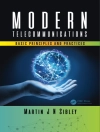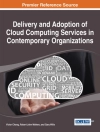An authoritative guide to the theory, technologies, and
state-of-the-art applications in microwave noncontact sensing and
analysis
Engineering researchers have recently developed exciting
advances in microwave noncontact sensing and analysis, with new
applications in fields ranging from medicine to structural
engineering, manufacturing to transportation. This book provides an
authoritative look at the current state-of-the-art in the
field.
Drawing upon their years of experience in both cutting-edge
research and industry applications, the authors address microwave
radar for both noncontact vital sign detection and mechanical
movement measurement. They explore key advances in everyday
applications of microwave and Doppler radar, especially in the
areas of radio frequency technologies, microelectronic fabrication
processes, and signal processing hardware and algorithms.
Microwave Noncontact Motion Sensing and Analysis:
* Reviews the theory and technical basics, from electromagnetic
propagation to signal processing
* Discusses all major types of motion sensing radar, including
Doppler, pulse, and FMCW
* Explores important advances in detection and analysis
techniques
* Uses numerous case studies to illustrate current applications
in an array of fields
* Provides integrated coverage of human vital sign detection,
through-wall radar, and Doppler vibrometry
* Offers a well-informed look at emerging technologies and the
shape of things to come
An important resource for engineers and researchers with a
professional interest in micro-wave sensing technology,
Microwave Noncontact Motion Sensing and Analysis is also a
source of insight and guidance for professionals in healthcare,
transportation safety, the military, and law enforcement.
Содержание
Preface xi
1 Introduction 1
1.1 Background, 1
1.2 Recent Progress on Microwave Noncontact Motion Sensors,
2
1.2.1 Microwave/Millimeter-Wave Interferometer and Vibrometer,
2
1.2.2 Noncontact Vital Sign Detection, 3
1.3 About This Book, 4
2 Theory of Microwave Noncontact Motion Sensors 7
2.1 Introduction to Radar, 7
2.1.1 Antennas, 8
2.1.2 Propagation and Antenna Gain, 10
2.1.3 Radio System Link and Friis Equation, 13
2.1.4 Radar Cross Section and Radar Equation, 15
2.1.5 Radar Signal-To-Noise Ratio, 16
2.1.6 Signal-Processing Basics, 17
2.2 Mechanism of Motion Sensing Radar, 18
2.2.1 Doppler Frequency Shift, 18
2.2.2 Doppler Nonlinear Phase Modulation, 19
2.2.3 Pulse Radar, 26
2.2.4 FMCW Radar, 27
2.2.5 Comparison of Different Detection Mechanisms, 29
2.3 Key Theory and Techniques of Motion Sensing Radar, 31
2.3.1 Null and Optimal Detection Point, 31
2.3.2 Complex Signal Demodulation, 33
2.3.3 Arctangent Demodulation, 34
2.3.4 Double-Sideband Transmission, 36
2.3.5 Optimal Carrier Frequency, 43
2.3.6 Sensitivity: Gain and Noise Budget, 49
3 Hardware Development of Microwave Motion Sensors 53
3.1 Radar Transceiver, 53
3.1.1 Bench-Top Radar Systems, 53
3.1.2 Board Level Radar System Integration, 61
3.1.3 Motion Sensing Radar-On-Chip Integration, 63
3.1.4 Pulse-Doppler Radar and Ultra-Wideband Technologies,
85
3.1.5 FMCW Radar, 89
3.2 Radar Transponders, 92
3.2.1 Passive Harmonic Tag, 93
3.2.2 Active Transponder for Displacement Monitoring, 95
3.3 Antenna Systems, 99
3.3.1 Phased Array Systems, 99
3.3.2 Broadband Antenna, 100
3.3.3 Helical Antenna, 103
4 Advances in Detection and Analysis Techniques 107
4.1 System Design and Optimization, 107
4.1.1 Shaking Noise Cancellation Using Sensor Node Technique,
107
4.1.2 DC-Coupled Displacement Radar, 111
4.1.3 Random Body Movement Cancellation Technique, 116
4.1.4 Nonlinear Detection of Complex Vibration Patterns, 124
4.1.5 Motion Sensing Based on Self-Injection-Locked Oscillators,
131
4.2 Numerical Methods: Ray-Tracing Model, 136
4.3 Signal Processing, 141
4.3.1 MIMO, MISO, SIMO Techniques, 141
4.3.2 Spectral Estimation Algorithms, 142
4.3.3 Joint Time-Frequency Signal Analysis, 153
5 Applications and Future Trends 157
5.1 Application Case Studies, 158
5.1.1 Assisted Living and Smart Homes, 158
5.1.2 Sleep Apnea Diagnosis, 164
5.1.3 Wireless Infant Monitor, 169
5.1.4 Measurement of Rotational Movement, 173
5.1.5 Battlefield Triage and Enemy Detection, 178
5.1.6 Earthquake and Fire Emergency Search and Rescue, 179
5.1.7 Tumor Tracking in Radiation Therapy, 180
5.1.8 Structural Health Monitoring, 185
5.2 Development of Standards and State of Acceptance, 194
5.3 Future Development Trends, 196
5.4 Microwave Industry Outlook, 202
References 203
Index 215
Об авторе
Changzhi Li, Ph D, is Assistant Professor in the
Electrical and Computer Engineering Department, Texas Tech
University. His research interests include biomedical applications
of microwave/RF, wireless sensor, and RF/analog circuits.
Jenshan Lin, Ph D, is a Professor in the Department of
Electrical and Computer Engineering, University of Florida. Before
joining the University of Florida, he worked for AT&T/Lucent
Bell Laboratories and Agere Systems.












